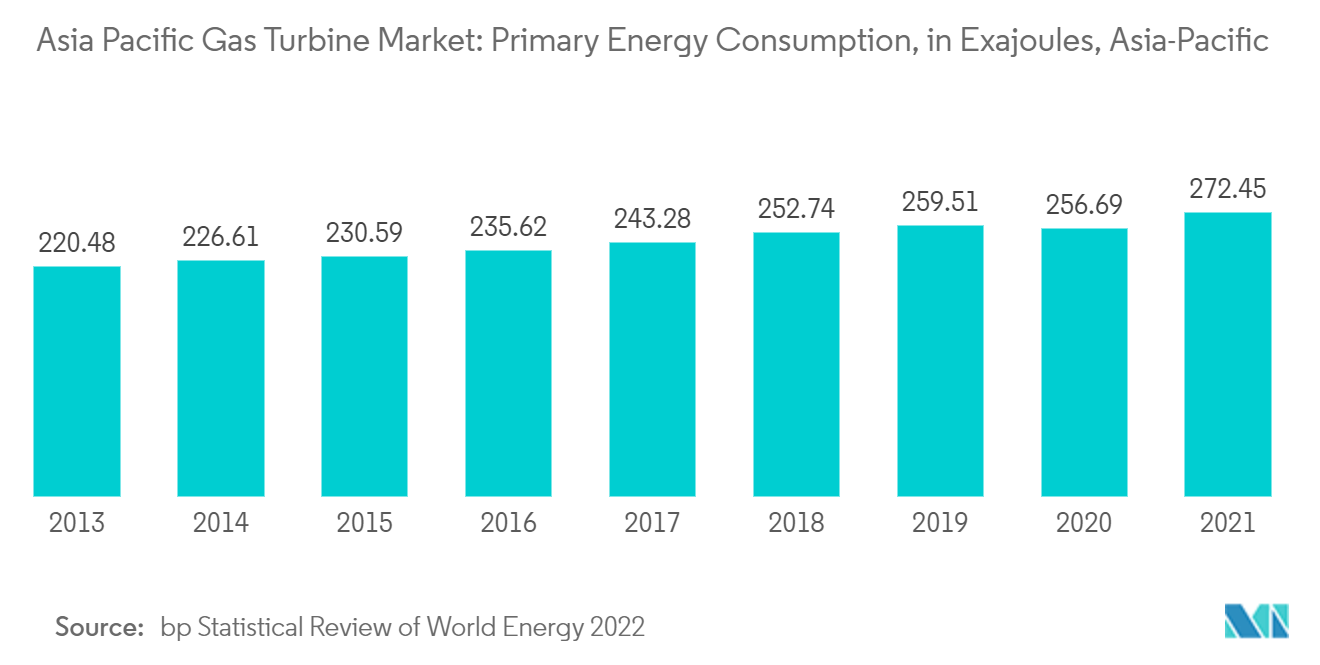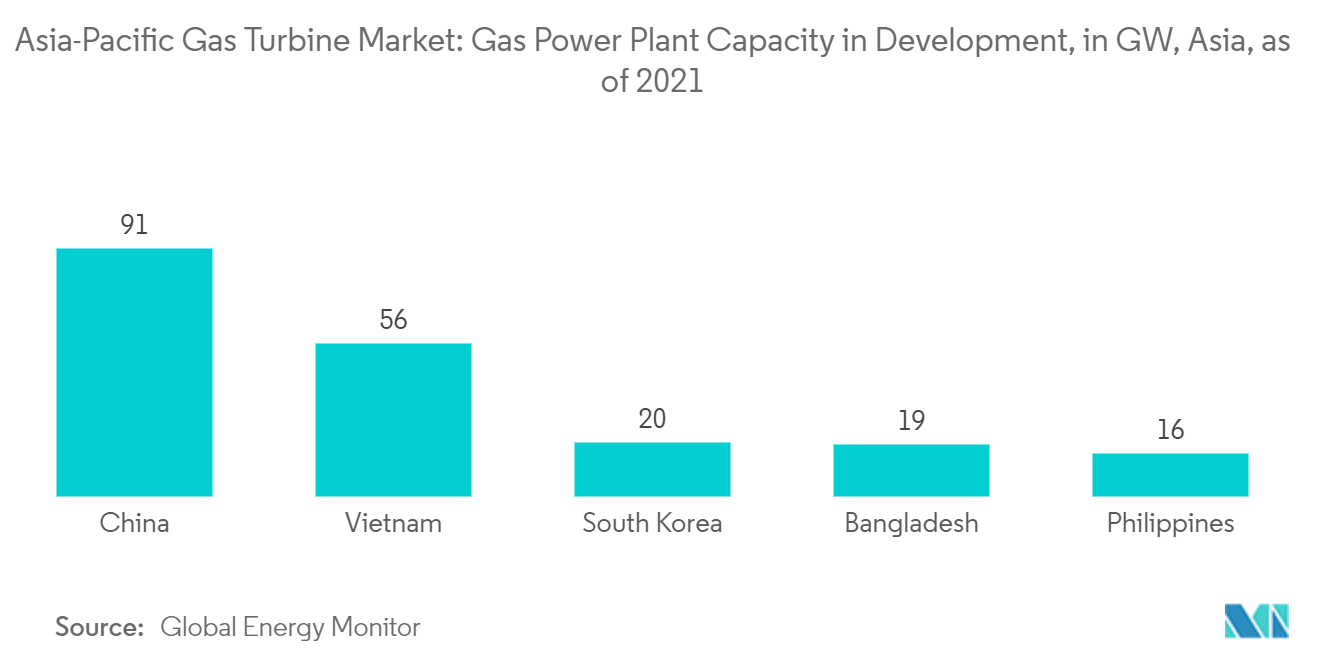Market Trends of Asia-Pacific Gas Turbine Industry
This section covers the major market trends shaping the APAC Gas Turbine Market according to our research experts:
The Power Generation Segment is Expected to Dominate the Market
- The demand for electricity is increasing due to urbanization and industrialization. Gas turbines are used in open-cycle and combined-cycle plants. Combined cycle power plants are more efficient than steam turbines as they generate more power.
- Gas turbines are used in utilities for baseload standby power and peak load applications. The power generated from combined cycle power plants has lower carbon dioxide emissions and governments are implementing stricter norms on such emissions. Thus, an increase in the demand for natural gas power plants will lead to the growth of the power generation segment.
- The overall electrical efficiency of a combined-cycle power system is typically in the range of 50-60% - a substantial improvement over the efficiency of a simple, open-cycle application of around 33%.
- Asia-Pacific is home to more than 50% of the global population and 60% of the large cities, and in the future, the continent will face increasing demand for power as millions of new customers are gaining access to electricity, with rapid population growth and industrialization. For instance, according to the BP Statistical Review of World Energy 2022, the primary energy consumption in the region increased from 220.48 exajoules in 2013 to 272.45 exajoules in 2021.
- Thailand is witnessing an increasing demand for energy due to economic growth. According to the BP Statistical Review of World Energy 2022, the primary energy consumption increased from 4.51 exajoules in 2010 to about 5.11 exajoules in 2021. Further, Thailand heavily relies on LNG imports for the country's energy needs. Due to the high prices of the war between Russia and Ukraine, the government has slashed LNG imports, putting its energy security at risk.
- In Thailand's newly published National Energy Plan 2022, the government pledges to become carbon neutral by 2065, and increase the renewable generation capacity in the nation from 20% in 2022 to about 50% by 2050, which directly aids the development renewable EPC market. However, the nation still depends on natural gas power plants for the country's energy needs and is expanding the capacity of Map Ta Phut LNG, receiving LNG terminal capacity.
- For instance, the Chachoengsao Gas Fired Power Plant is in its initial stages, and the project construction is expected to commence in 2025, and the project has a capacity of 600 MW, and the electricity will be sold to the Electricity Generating Authority of Thailand under a power purchase agreement for 25 years.
- As part of India's draft National Electricity Plan (NEP 2022), which was released for public consultation in September 2022, the CEA (central electricity authority) outlined progress during the period 2017-22 and detailed plans for capacity additions between 2022 and 27. The NEP 2022 projects 370 MW of gas-based power generation capacity to come online by 2027. Thus, the addition of 370 MW would marginally increase the share of natural gas in power generation to 6.2%.
- Such kind of developments is expected to have an overwhelming effect on the growth of the Asia-Pacifc gas turbine market in the near future.

China to Dominate the Market
- Factors, such as the growth in demand for electricity fuelled by high levels of urbanization, industrialization, and infrastructural developments, and subsequent investments in developing new large gas-fired combined cycle power generation are expected to spur the demand for gas turbines.
- The Chinese gas turbine market is anticipated to grow, owing to the positive clean energy outlook, coupled with the ongoing expansion of large-capacity gas-fired power plants across the nation.
- In March 2021, the National People's Congress of China announced the 14th Five-Year Plan for National Economic and Social Development and Long-Range Objectives for 2035, which focuses on vigorously increasing gas-fired power plant capacity to 40 to 50 GW by 2025.
- Moreover, China is the largest importer of natural gas globally, and as the nation tries to reduce electricity generation through coal-fired power plants, the demand for natural gas increases to meet the energy requirements.
- In March 2022, GE Gas Power and Harbin Electric have announced the construction of a new 2-GW natural gas-fired power plant in China to assist in replacing a large regional coal-fired plant. This project will use three GE 9HA.01 gas turbines. The Guangming combined cycle power plant, located in the Shenzhen Guangming district of Guangdong province in China, has ordered the equipment.
- According to Global Energy Monitor, as of 2021, China has the largest gas power project portfolio in Asia, with approximately 91 gigawatts of gas power capacity in the proposal stage or under construction. Vietnam was the next in line, with an estimated addition of 56 gigawatts of gas power capacity to its power grid.
- Such kinds of developments are likely to steer the China market for gas turbines in the near future.


